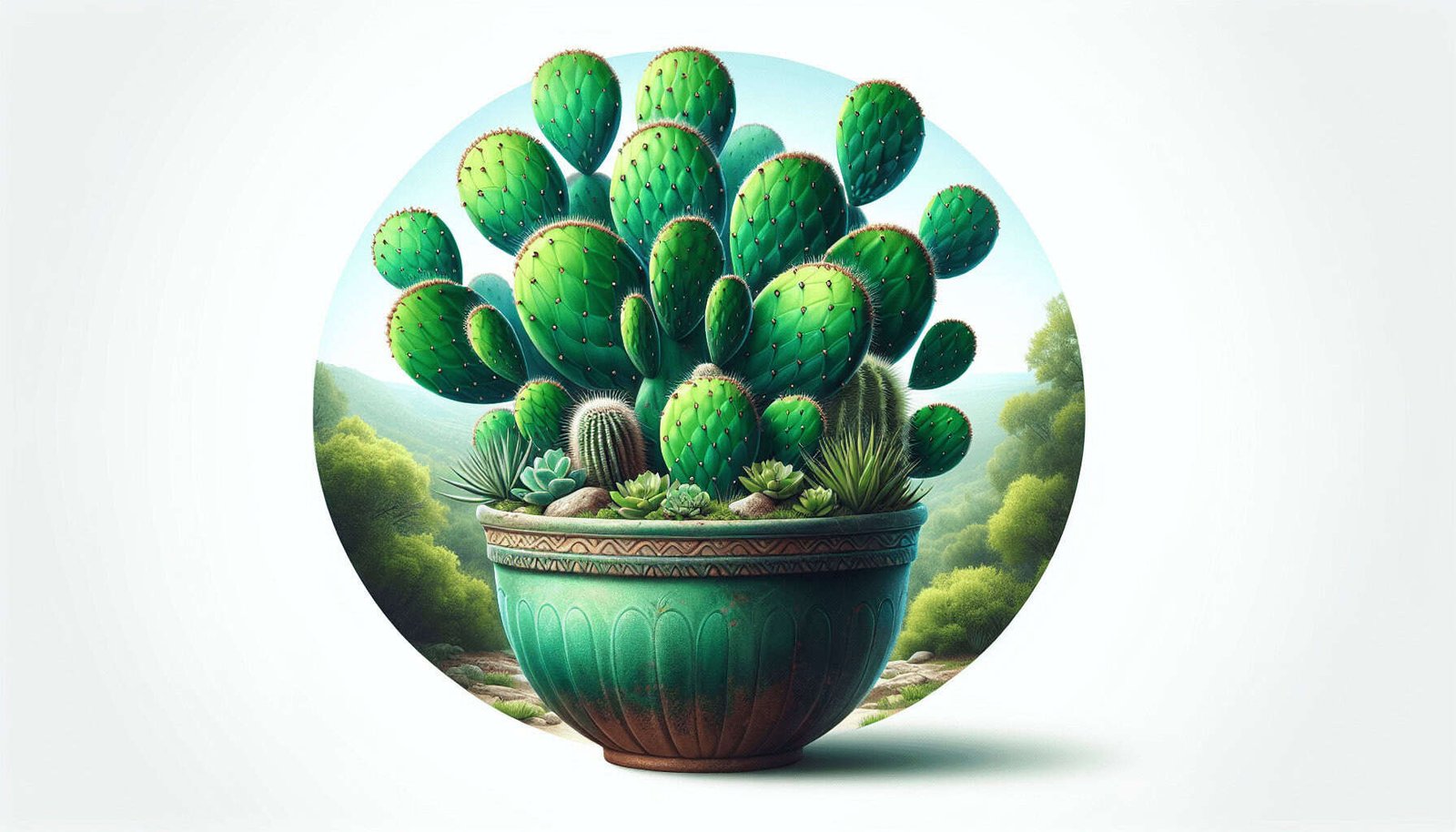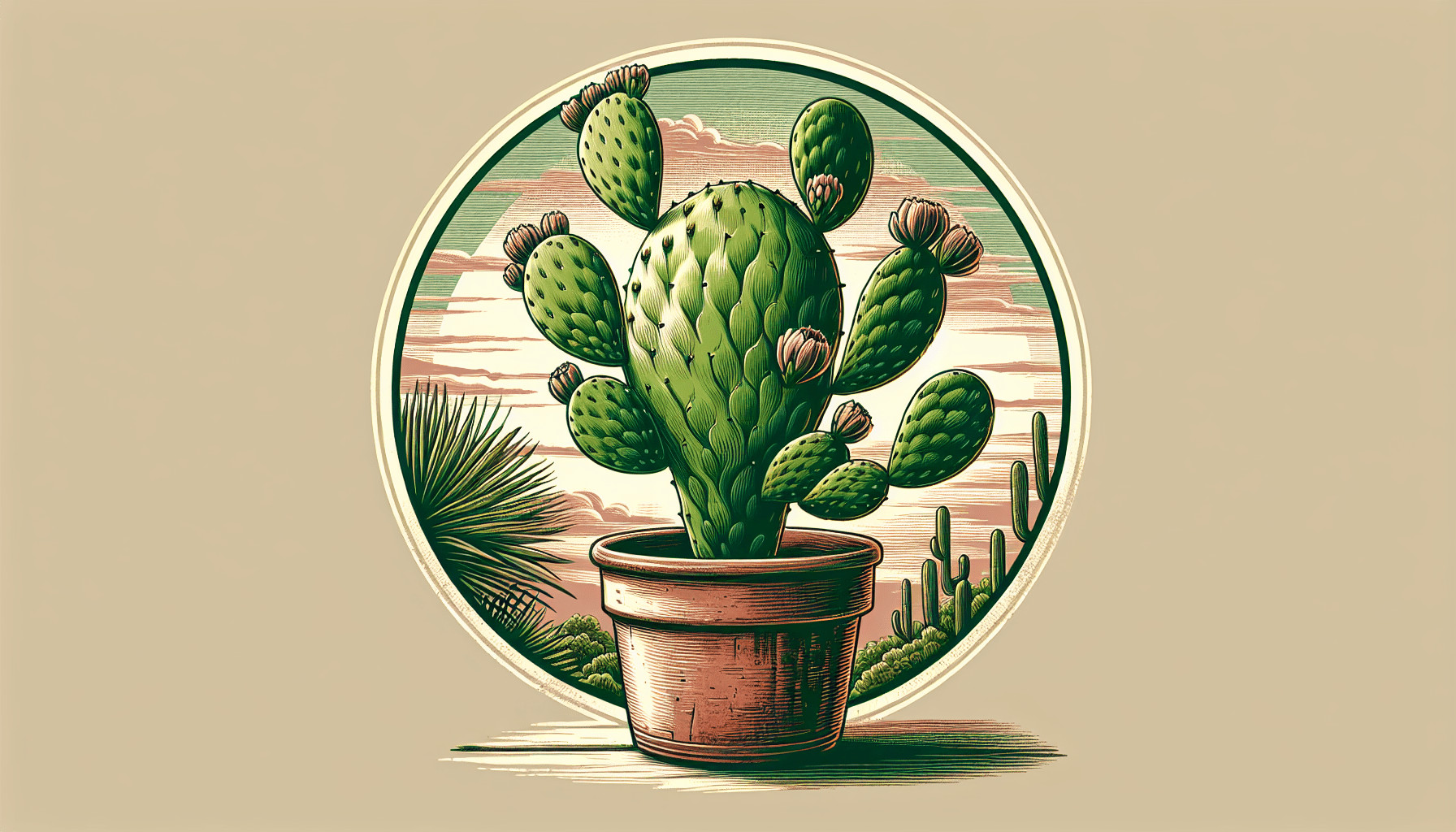Have you ever thought about how satisfying it would be to grow your own cactus garden right on your balcony or in your living room? If so, you might be interested in learning how to grow Nopal Cactus in a pot or container. Nopal Cactus, also known as Opuntia or prickly pear, isn’t just visually appealing with its bright green pads and vibrant blooms; it’s also highly versatile. You can cultivate it for decorative purposes or even enjoy its fruits and pads in various culinary dishes.
Growing Nopal Cactus in a container is ideal for those who have limited outdoor space or want to bring a touch of the desert indoors. With the right care and conditions, you can enjoy the unique charm and practical benefits this cactus has to offer. So, let’s delve into the essential steps and considerations needed to successfully grow Nopal Cactus in a pot.
Understanding the Nopal Cactus
What is the Nopal Cactus?
The Nopal Cactus is a member of the Opuntia genus, often called the prickly pear cactus. Known for its flat, oval-shaped pads covered with spines, the Nopal comes in various species, each offering unique features and resilience. Its origins trace back to the deserts of North and South America, where it thrives in arid climates.
Benefits of Growing Nopal Cactus
Growing Nopal Cactus at home provides numerous benefits. Its edible pads and fruits are rich in essential nutrients, such as vitamins A and C, calcium, and magnesium. Additionally, having cacti around your home can improve air quality by absorbing pollutants and providing oxygen. Moreover, they add an aesthetic touch, bringing a sense of nature’s tranquility into your living space.
Selecting the Right Pot and Soil
Choosing the Right Container
When growing Nopal Cactus, selecting the appropriate container is crucial. It’s important to consider the size, material, and drainage capacity of the pot:
- Size: Opt for a pot slightly larger than the current size of your cactus to allow room for growth.
- Material: Clay or terracotta pots work well because they allow excess moisture to evaporate, reducing the risk of over-watering.
- Drainage: Ensure the pot has drainage holes at the bottom to prevent water from pooling and causing root rot.
Optimal Soil Mix
The soil you use plays a significant role in the health of your Nopal Cactus. These cacti prefer well-draining soil to mimic their natural desert environment. You can use a commercial cactus potting mix or create your own by combining equal parts of sand, potting soil, and perlite or pumice.
| Component | Proportion |
|---|---|
| Sand | 1 part |
| Potting Soil | 1 part |
| Perlite/Pumice | 1 part |
This mix ensures good aeration and drainage, essential factors for a thriving cactus.

Planting the Nopal Cactus
Planting From Pads
Growing Nopal Cactus from pads is a popular and straightforward method. Here’s how you can do it:
- Selection: Choose healthy pads from a mature Nopal Cactus. Look for pads that are 6 months to a year old for the best results.
- Drying: Allow the cut end of the pad to callous over by leaving it in a warm, dry place for around 1-2 weeks.
- Planting: Once calloused, plant the pad upright about an inch deep in your pre-prepared pot with cactus soil.
- Water Sparingly: Water the soil lightly and continue to lightly water every few weeks. Overwatering is a common mistake that can hinder root development.
Transplanting a Young Plant
If you have a young Nopal Cactus plant, you can transplant it into a pot easily:
- Preparation: Fill the new pot with cactus soil, leaving a small space for the plant.
- Positioning: Carefully remove the cactus from its current container, disturbing the roots as little as possible.
- Planting: Place the cactus in the center of the new pot and fill in with soil, ensuring it’s firm but allows drainage.
Caring for Your Nopal Cactus
Watering Needs
Understanding the watering needs of your Nopal Cactus is essential to avoid overhydration. During the growing season (spring to early fall), water every 2-4 weeks, allowing the soil to dry completely between waterings. In the winter, reduce watering further as the cactus enters a semi-dormant state.
Light Requirements
Nopal Cactus thrives in bright, direct sunlight. Aim for about 6-8 hours of sunlight each day. If you’re growing indoors, place it near a south-facing window. Consider using grow lights during the darker months to supplement its light intake.
Temperature Considerations
This cactus prefers warm temperatures ranging between 70°F and 100°F (21°C to 38°C). In colder environments, ensure your cactus is in a warmer spot, and avoid exposing it to temperatures below 50°F (10°C).

Fertilizing and Pruning
Fertilizing Your Cactus
While Nopal Cactus doesn’t require heavy feeding, applying a balanced cactus fertilizer during the growing season can encourage healthy growth. Use a liquid fertilizer diluted according to package instructions and apply it once every 4-6 weeks.
Pruning for Health
Pruning is not only about aesthetics but also about maintaining your cactus’s health. Trim away any dead or diseased pads using sterilized tools to prevent the spread of infections. Be sure to wear gloves and handle your cactus with care, as the spines can be quite sharp.
Common Pests and Issues
Identifying Pests
Although relatively hardy, the Nopal Cactus can fall prey to certain pests such as mealybugs and spider mites. Regularly inspect your plant and look for signs like white fluff or webbing.
Dealing with Diseases
Fungal infections can occur if the soil remains too wet. Black spots or soft, mushy areas on the pads could indicate rot. If this happens, adjust your watering schedule and trim away affected areas to prevent further spread.

Harvesting and Using Nopal Cactus
Harvesting Pads and Fruits
Nopal pads are best harvested when young and tender, usually when they are 6-8 inches in length. To avoid the spines, use tongs or gloves when cutting. Prickly pear fruits ripen in late summer to early fall, signified by their vibrant red or yellow color.
Culinary Uses
Nopal pads can be prepared in numerous ways, including grilling, sautéing, or adding to salads. They offer a crisp texture and a slightly tart flavor. The fruits can be consumed raw or used in jams and beverages, adding a sweet and refreshing twist.
Conclusion
Growing Nopal Cactus in a pot or container offers a rewarding experience, combining both aesthetic appeal and practicality. With the right mindset, you can easily cultivate these resilient plants, whether you’re seeking to enhance your indoor decor or enjoy the numerous health benefits they offer. Remember, the key to a thriving Nopal Cactus lies in good drainage, moderate watering, and ample sunlight. By understanding and meeting these needs, you’re well on your way to having a flourishing potted garden.


